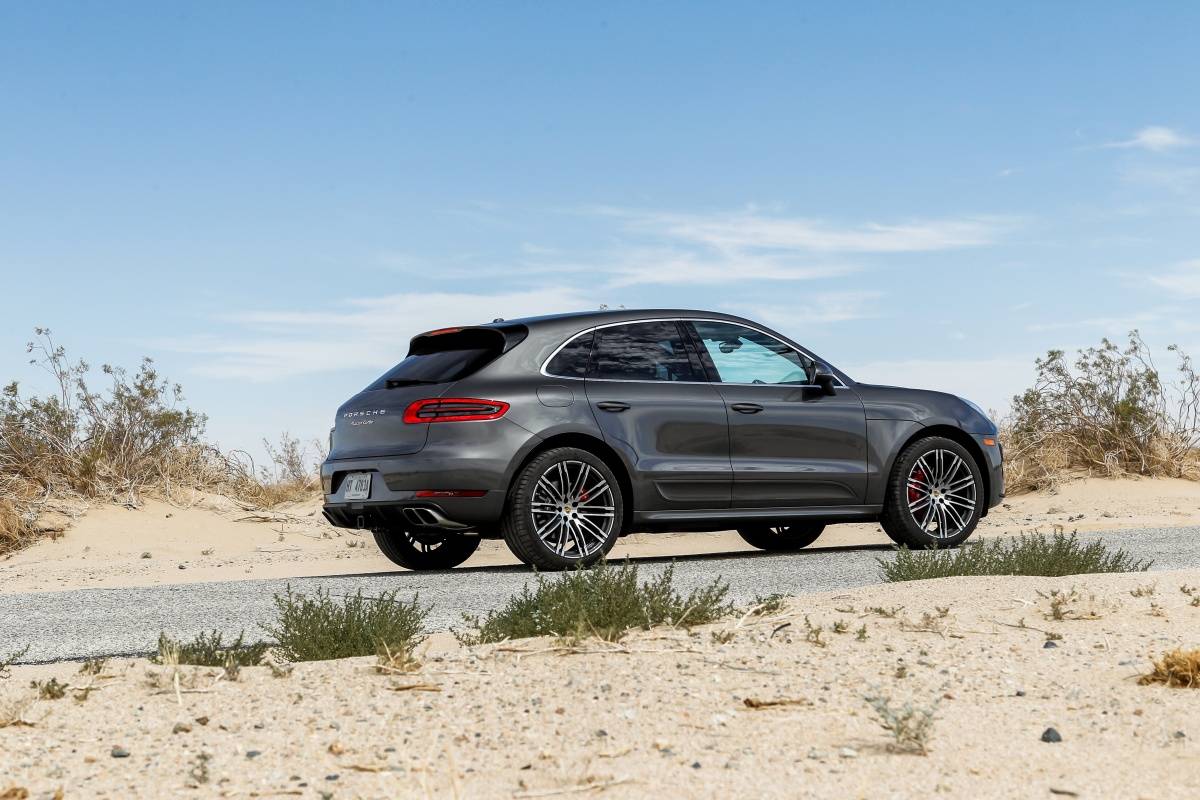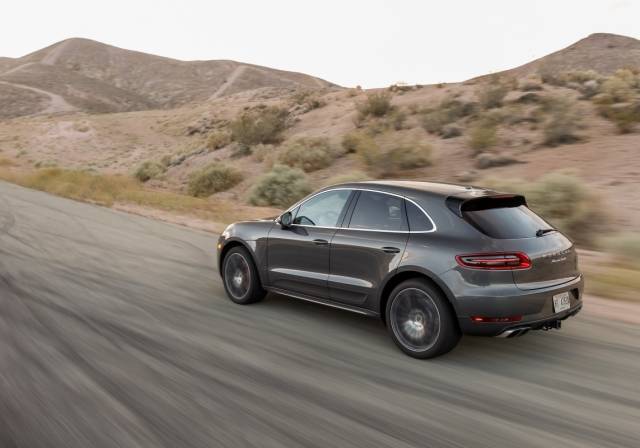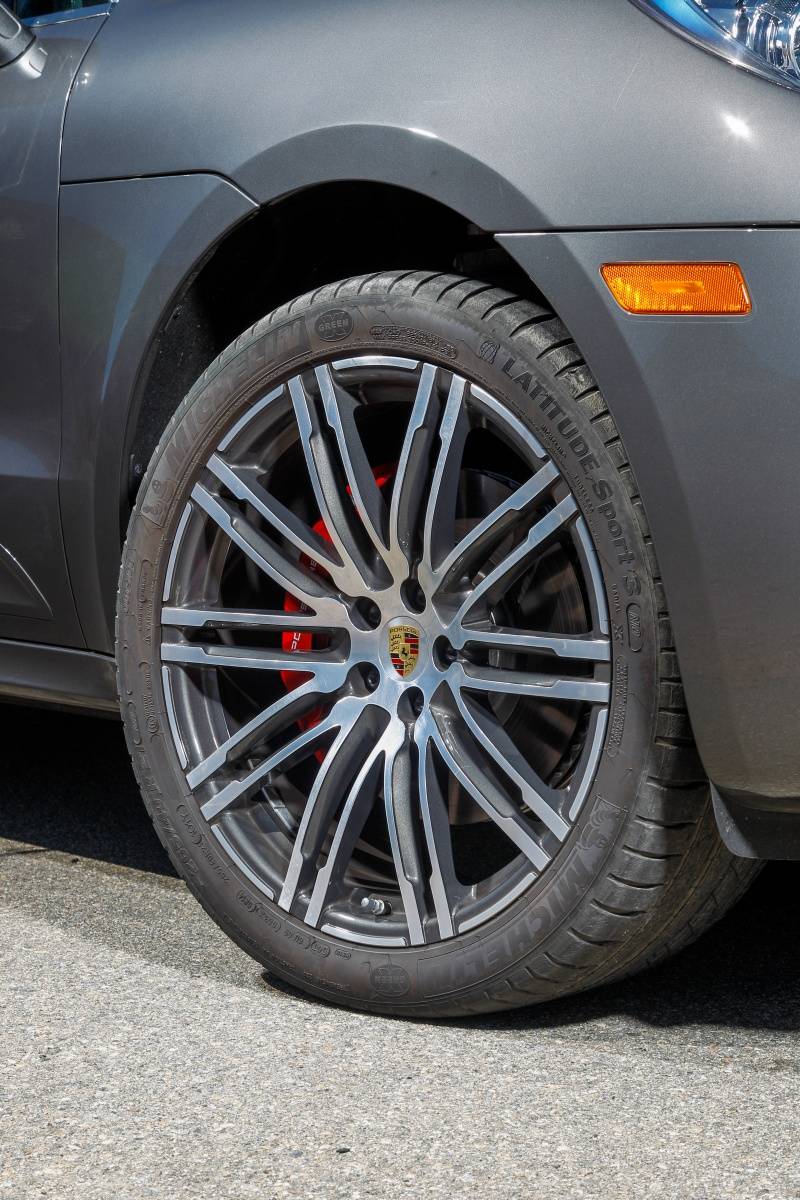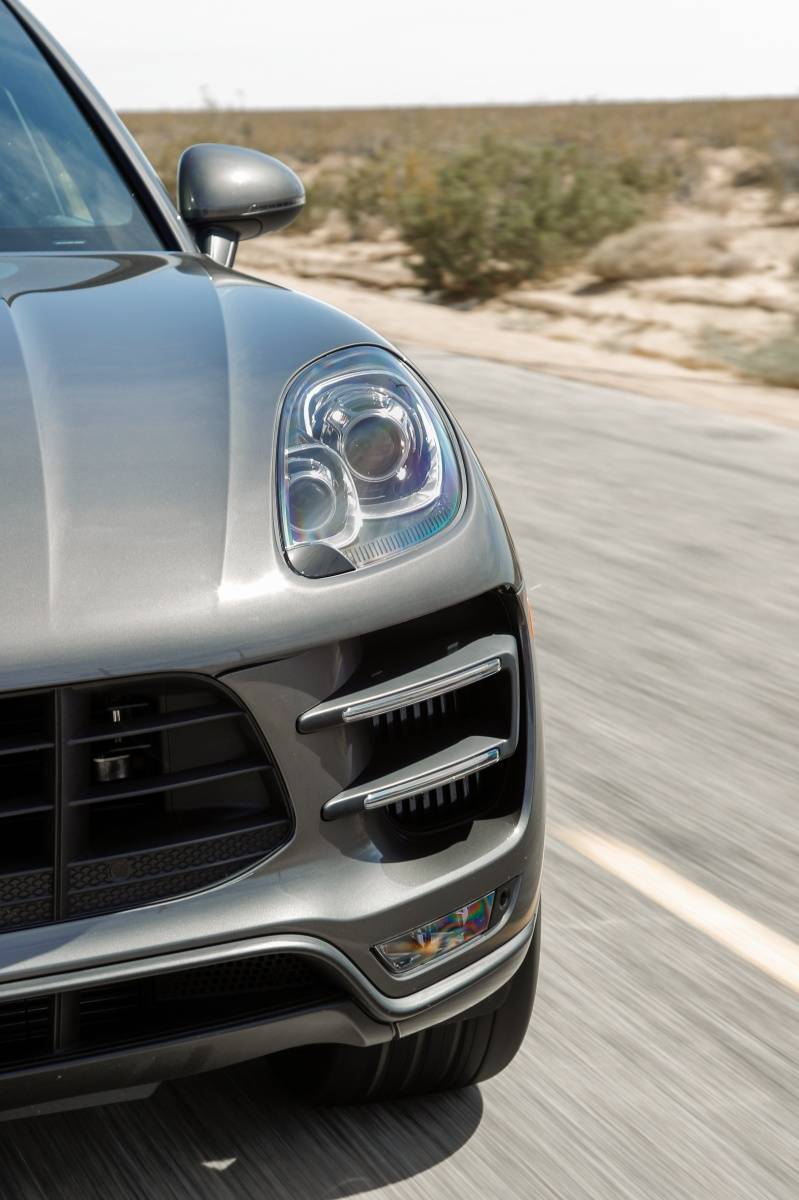The 2015 Porsche Macan Is A Small Wonder

Looks like every luxury automaker is putting in their bids for the next hot, small, and premium utility vehicle meeting the diverse needs of active consumer lifestylists. Whether you’re a parent juggling three weekend games for your children, a hardcore off-road cyclist or a hospitable friend who volunteers their ride for road trips with the boys/girls, a vehicle that provides comfort, convenience, fuel efficiency, and performance is always ideal. Land Rover presented the Evoque, Acura has the RDX, BMW rolls with the X3, Audi is on point with the Q5, Cadillac represents with the SRX and Porsche now enters the stadium with their all-new 2015 Macan.
The Small Wonder from Germany is just that; full of inquisitive surprises, laden with technology expected of the Cayenne, and built with “Happy Feet” in the form of AWD that excels on both racetracks and rocky hills. It’s true as I laid witness to the Macan’s diversity recently at Willow Springs Raceway in Rosamond, California. I know what you are thinking. Why in the world is Automotive Rhythms testing a SUV in environments properly suited for coupes? According to Porsche the revelation is quite simple, “We have shown with the Cayenne and the Panamera that many of the very same attributes that make the 911 a great sports car translate well to other segments of the marketplace. Continuing this tradition the Macan represents the first time such a level of performance and agility has ever been available to those seeking a compact SUV package.”

Macan, Indonesian for “tiger,” is denoted by just two models: the $49,900 Macan S and the $72,300 Macan Turbo. But if you are familiar with Porsche’s a la carte pricing menu you will be able to relate to the $102,435 sticker price on the Mahogany Metallic model we tested. It was replete with the $1,385 Air Suspension, $1,490 Porsche Torque Vectoring Plus (PTV Plus), $1,600 Adaptive Cruise Control, $1,290 Sport Chrono Package (adds Launch Control and SPORT PLUS Button), $4,290 Burmester High-End Surround Sound System, and the gorgeous $3,300 21” 911 Turbo design wheels.
In total our vehicle was optioned out with 34 distinct line items, most of which are akin to the DNA of performance engineered vehicles. In fact, the first Porsche was built in Austria in 1948 and every car since has been developed around motorsports. The German brand says there are no demographic targets for the Macan, but I don’t see too many young, male trendsetters rushing for the Indonesian tiger. Actually, all of the onlookers who approached us while cruising around Pasadena were females, and unless they are weekend racers most of the aforementioned options are not necessary.

Stylistically, the Macan is a miniature version of the Cayenne from the B pillar forward, and something else interesting moving rearward. The sloping roofline is called the “fly line” by Porsche designers while the “tight at the top” and “wide at the bottom” tailgate is reminiscent of the 911. But it gives the vehicle a polarizing view from that angle. A grab handle has been forfeited in place of an open/close button on the windshield wiper motor cover. Typical large front air intakes, a dominant grille and a 38-pound wraparound, aluminum clamshell hood dominate the front fascia with dynamics and efficiency. A cadre of design cues have been borrowed from the 918 Spyder to illuminate the Macan’s stature including side blade inserts (Lava Black, Carbon Fiber or body color), rear LED taillights, and the multifunction steering wheel with paddle shifters. I particularly like the Carbon Fiber variant.

Our two-hour drive up to Willow Springs in the Macan Turbo featured highway and mountain roads that were well suited for the SUV’s mechanics. The pompous 3.6-liter Twin Turbo V6 kicks out 400 horsepower and 406 lb-ft of torque (from 1,350 rpm) and exhibits no obvious turbo lag. It sprints from 0 to 60 mph in 4.6 seconds (4.4 with Sport Chrono) and manages 17 city/23 hwy mpg. This engine partners with the 7-speed PDK (double clutch) transmission, air suspension including Porsche Active Suspension Management (sits 15 mm lower than the standard steel spring suspension), PTV Plus and the staggered 21” rims tucked in Michelin performance rubber. This combination offered acceleration, braking, handling and agility unfathomable on a sport ute. Literally, we were chasing 911s around Willow Springs in the Macans. Porsche Traction Management (PTM) does most of the thinking for the active AWD system so the driver doesn’t have to. It variably distributes up to 100% of the vehicle’s torque from front to rear and side to side with the addition of PTV Plus.
On the other hand the Macan S is powered by Porsche’s brand new 3-liter Twin Turbo V6 with 340 horsepower and 339 lb-ft of torque available between 1,450-5,000 rpm. It runs from 0 to 60 mph in 5.2 seconds and also achieves 17 city/23 hwy mpg. The S also handled well on the track but not as impressively as the Turbo since it was sitting on all-season tires and adorned with the steel suspension requiring more work from the vehicle operator. After the track exercises we went off-roading up steep trails. An “off-road” button recalibrates the suspension for the task at hand and the Hill Descent button puts the vehicle in auto pilot as it self brakes and crawls at very low speeds down whatever hill you came up. Extraordinary stuff.

Back inside you will experience a similar cabin as the Cayenne or the Panamera for that matter. The ignition switch is on the left of the steering wheel as usual and the sloping center console is decorated with an array of function buttons from the Sport button to the HVAC settings. The front seating position is 2.75” lower than the Cayenne and the rear split folding seats allow for 53 cubic feet of cargo when laid down and 17.7 cubic feet when upright.
The new Macan is a breath of fresh air in the growing market segment and offers a multitude of amenities for all buyer types. Just prepare for price adjustments when you outfit your vehicle with the long list of available options.













